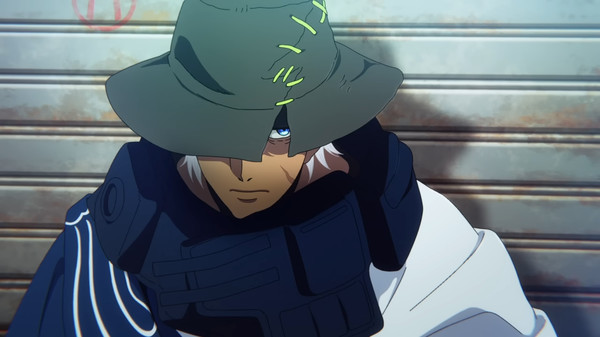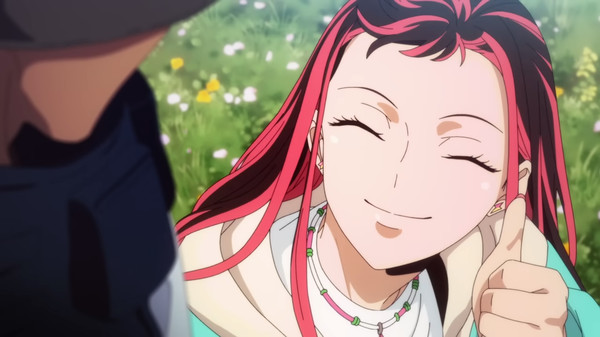
Creative Producer Goro Taniguchi, Director Junichi Yamamoto Talk Web3 Anime
Los Angeles-based Web3 anime-styled brand Azuki and advertising conglomerate Dentsu debuted the first nine-minute episode of their joint anime endeavor, Enter The Garden, on April 30. The episode, which has already racked up a quarter of a million views, is an experiment following previous NFT-promoting attempts in the anime-sphere. Singer Tove Lo teamed up with Tokyo-based Shinsei Galverse NFT project for her animated music video “I like u.” Similarly, anime Shinobanai! CryptoNinja Sakuya was the result of the online pop culture commerce company Tokyo Otaku Mode, Fanworks, and the CryptoNinja NFT project coming together.
Web3 assets, like non-fungible tokens (NFTs), blockchain technologies, and cryptocurrency, came to prominence in the early 2020s and were lauded as the future of currency and a direct way to tangibly support artists. Apps, social media platforms, celebrities, and tech-heads quickly bought in to this decentralized financial future, but average consumers remained skeptical. Money was certainly made; the crypto art piece “First 5000 Days” by Beeple sold for US$69 million in 2011. However, concerns ranging from environmental impact due to the high processing power required to criticism about “buying a digital receipt to prove ownership of a JPEG” kept the movement from expanding beyond its established enthusiasts.
As of 2023, the NFT market is worth roughly US$11.8 billion, down more than 50% from the previous year. However, NFT adopters and investors are hopeful that coupling NFTs with gaming and other utilities will spur more user integration. Media research group Kagan predicts in-game NFTs to grow to a US$15 billion market by 2027.
Azuki, Enter The Garden, and other NFT-related anime projects enter the industry at an interesting juncture. Foremost, the anime industry has a larger financial problem. Despite larger investment in the industry by foreign entertainment companies, this has led to more anime being made instead of widespread pay and work improvements for animation staff. It’s easy to see how such conditions could lead to looking for financial alternatives to benefit artists. Well-respected animation professionals like Terumi Nishii, Bottle George and Poupelle of Chimney Town creator Akihiro Nishino, GANTZ‘s Hiroya Oku, and popular anime series Fist of the North Star, Muv-Luv Alternative, and Kindaichi Case Files have all dabbled in NFTs.
Enter The Garden brings together director Junichi Yamamoto (Why Raeliana Ended Up at the Duke’s Mansion, More Than a Married Couple, But Not Lovers) and creative producer Goro Taniguchi (One Piece Film Red, Back Arrow) to create an anime based around Azuki‘s NFT platform. To viewers unfamiliar with the platform’s story, aspects of Enter The Garden‘s first episode, “The Waiting Man,” may seem impenetrable. The common Japanese phrase “ikuzo!” (“Let’s go!”) is translated to the acronym “IKZ!” Comments on the episode allude to this being an in-group phrase used by Azuki NFT holders. In all likelihood, it’s just IKuZo=IKZ as shorthand for “Let’s Go!” but for those who checked out the anime’s PV and scrolled through comments of “Do it for Daniel!” I regret to inform you that I still don’t know who Daniel is in this context; as far as I know, the phrase originated from a documentary about a young man’s suicide in 2012. Attempts to parse the project’s lore on the official website were a bit overwhelming.
This in-community referencing, like a secret handshake, is purposefully baked into Enter The Garden. In our interview with Yamamoto and Taniguchi, the Code Geass director shared that the anime’s first target is Azuki‘s user base, followed by curious onlookers on the periphery. Taniguchi and Yamamoto shared these insights and more about the Enter The Garden project below.
ANN: How did you become involved in this project and what about appealed to you?
Junichi Yamamoto: So, I already had an existing relationship with production companies Qzil.la and IMAGICA Infos, and they started talking to me. And, of course, this has to do with Web3. We have Web1, Web2. But when it comes to the exchange of information or the copying of digital data, it was kind of limited in the past. Now we, just like with objects, are able to trade, exchange things or a value. I thought that’s one of the advantages of Web3.
That aside, the team and everybody in the Azuki community seem to absolutely love anime. Watching their creations, we can feel that the Azuki team and Chiru Labs are heavily influenced by Japanese animation.
And what they’ve created is kind of a hybrid of that and street culture. And I just love that. The idea of being able to exchange, trade, what we love, especially animation, just like trading Pokémon cards. It’s something new to me. I felt a possibility here for something innovative to be born and certainly a possibility for the anime that I love to evolve. The newness was definitely a factor.
I’m curious about, in relation to the NFT art element you mentioned, when you went to start directing this anime adaptation, were you looking at the pre-existing NFT artwork as inspiration for the characters as they appear here? Or did you start completely fresh with making your own characters?
YAMAMOTO: When I joined the project, we were in script development. When it comes to the original character designs and the plot itself, this was done largely by Taniguchi-san and also the writer Kishimoto-san before joining the project. The characters were already sort of decided at that point. But of course, we crafted it together after that. TK and Haru are the main characters and they’re kind of like a diptych. They did become buddies, but I also concentrated on crafting the contrast between them. And when it comes to Haru, she is in contrast to TK, who is basically ‘The Waiting Man’ who, for most of the show, doesn’t move even one millimeter. So she, on the other hand, is very kinetic and very effervescent as well.
I heard that a skateboard is a communication tool in the Azuki world, an important one at that. So, I wanted that to become something that binds them together. Obviously, we’re giving things away here, but this is shown in the last moment when they ride the water together. And so obviously, we did want to link this world very much with what the Azuki community loves about Azuki.
Then with Haru, she’s very rich in her expressions, very honest, and she’s able to have this ability to speak to anybody on the same kind of level. Even with somebody like TK, she’s able to talk quite naturally to him. So she’s a very tender character. She also has guts, though, when she’s facing the police.

And on the other hand, you have TK, who’s very enigmatic. And for him, I concentrated on the gap. He had to have this very cool sort of look and demeanor, but at the same time has this lure with this tiny, cute frog on it. And he also had to have the sensuality in addition to that coolness, too. If you pay attention, he has scars on his face and his body, and that suggests that maybe he has been hurt in the world of the web, too. Possibly. So those are some of the things that I was mindful of.
NFTs and Web3 are kind of controversial in America, maybe compared to other countries. How do you think this affects the viability of the project? Was the project made for broad audiences, or is it mostly targeted toward the Azuki fan base that already exists?
Goro Taniguchi: With regards to the target audience, the core is the existing Azuki fans. Of course, I had no intention of not focusing on them, but at the same time, on the periphery, there are people who are interested or will be interested in what Azuki is, and my hope is that the interest will expand through the anime.
With regards to NFTs, somewhat like in the U.S. and Japan as a society, it’s not something that is accepted by everyone yet. That said, I didn’t see any path that animation would not be in partnership within this world. Animation, when you look back on its history, has always partnered with different types of companies or investors in creating our visual work, and that’s how it evolved.
Within Japan, when it comes to intellectual property, we’re still in the middle of setting up regulations and laws. But even so, if we can find a new route, a new way of creation for Japanese animation, and beyond through this new model, I thought that would be worthwhile. So that is one of the reasons that I hope this project is accepted by many.

The production committee system typically works for animation projects, and that’s caused various hurdles in getting projects made. Do you feel that this new model is viable as opposed to the production committee system? And what kind of financial results have you seen as far as that investment getting to animators?
TANIGUCHI: Well, like this case that you’ve just mentioned, for a group or one investor to come in outside of Japan to create animation, this is not actually unheard of. Lynzee, you’re probably aware that this has happened, especially in the 21st century. Many Japanese anime are made not through a consortium but through one company backing it financially. So, this isn’t actually a rare case when it comes to Japanese animation production. But of course, in this case, an NFT is involved. And I felt that if there is something that can be returned to the animators through this new model, and I don’t know what that exactly is going to be, but if there is a possibility there, then that’s something I thought that was worth pursuing.
If it’s advantageous for the Japanese anime industry, it’s definitely going to be beneficial for the global animation community as well.
Enter The Garden‘s first episode is currently streaming on YouTube and on Azuki‘s official website.
